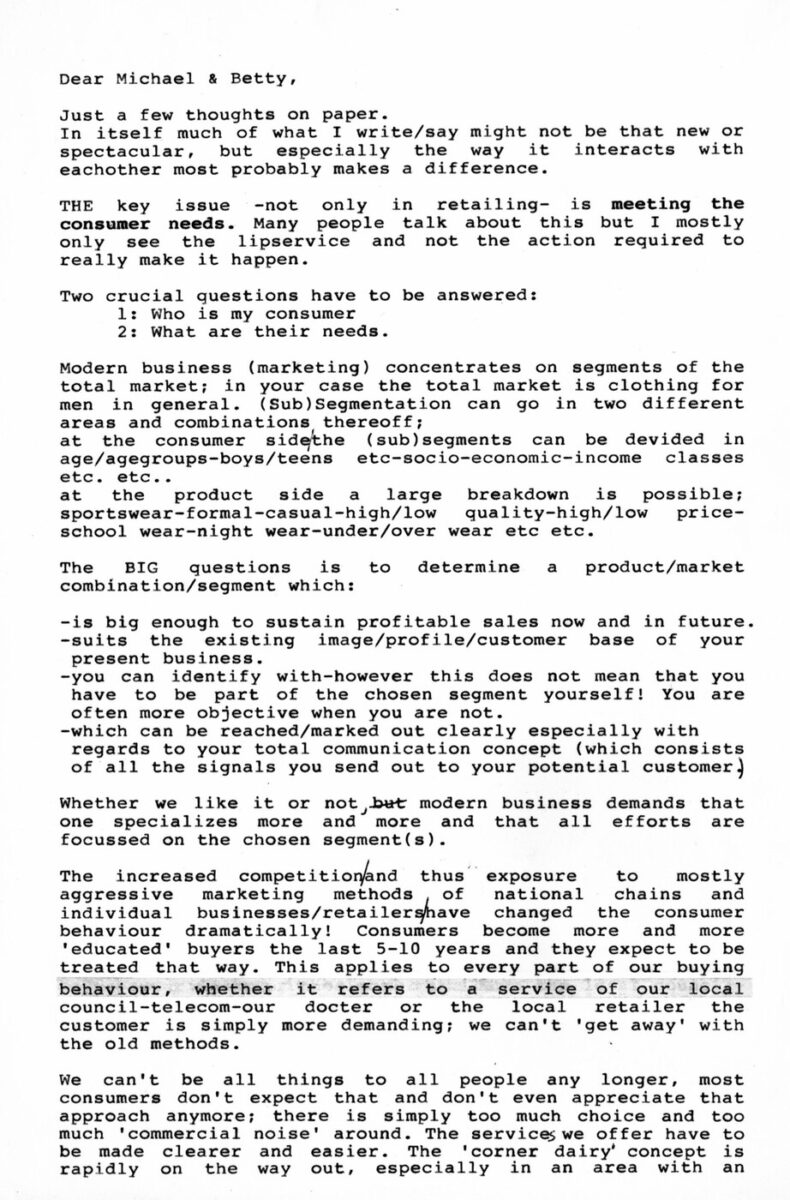– 2 –
overkill of shops within a 20 km radius for a basically non-essential product.
YOUR CHALLENGE!
Choose the correct product/market combination(s) and translate those in specific goals and objectives. Then develop action plans and implement them all aimed at achieving the set goals. EVERYTHING has to be focussed on achieving the final goal! I realize that this in itself sounds simple and not very spectacular, but I know from many years of experience that actually doing it that way is a MAJOR challenge.
It often needs a (total?) change of thinking. Crucial is at one side the willingness/ readyness to go ‘all the way’ and at the other side the need to know exactly what your choosen [chosen] market segment really needs and wants, how they want it, when, at what place at what price etc etc etc.
GREAT SO FAR?
To really get ‘the ball rolling’ may I suggest you try to answer the following questions:
Where do you want the business to be in 5-10 years in terms of image-profile-customer/market combination-location? (s) – sales/ profit and not in the least your own positions in it.
In 5-10 years how do you want your average consumer to describe your business(es). This is the place to include some of your dreams !?
Also you need to analyse the present position and results. No sensible decisions on future changes of direction can be made without proper inside in the present situation. Some questions you should ask yourself (and answer) are:
What segments are now buying; try to break down your business into blocs or customer groups and link them with products they buy, preferably with information on volume/ profitability.
Do the different groups relate to each other, how?
How important is every group to your business?
What 20% of your customers are responsible for what 80% of your sales/ profit.
What 20% of you products are responsible for what 80% of your sales/ profits.
The whole idea is to determine the importance of the different consumer groups and product groups at present.
Another important thing I would suggest you do in this stage is make a strenghts [strengths] & weakness analysis. This refers especially to the internal aspects of your business, ot the external (business) environment you work in. This is often much harder than you would think.














Do you know something about this record?
Please note we cannot verify the accuracy of any information posted by the community.